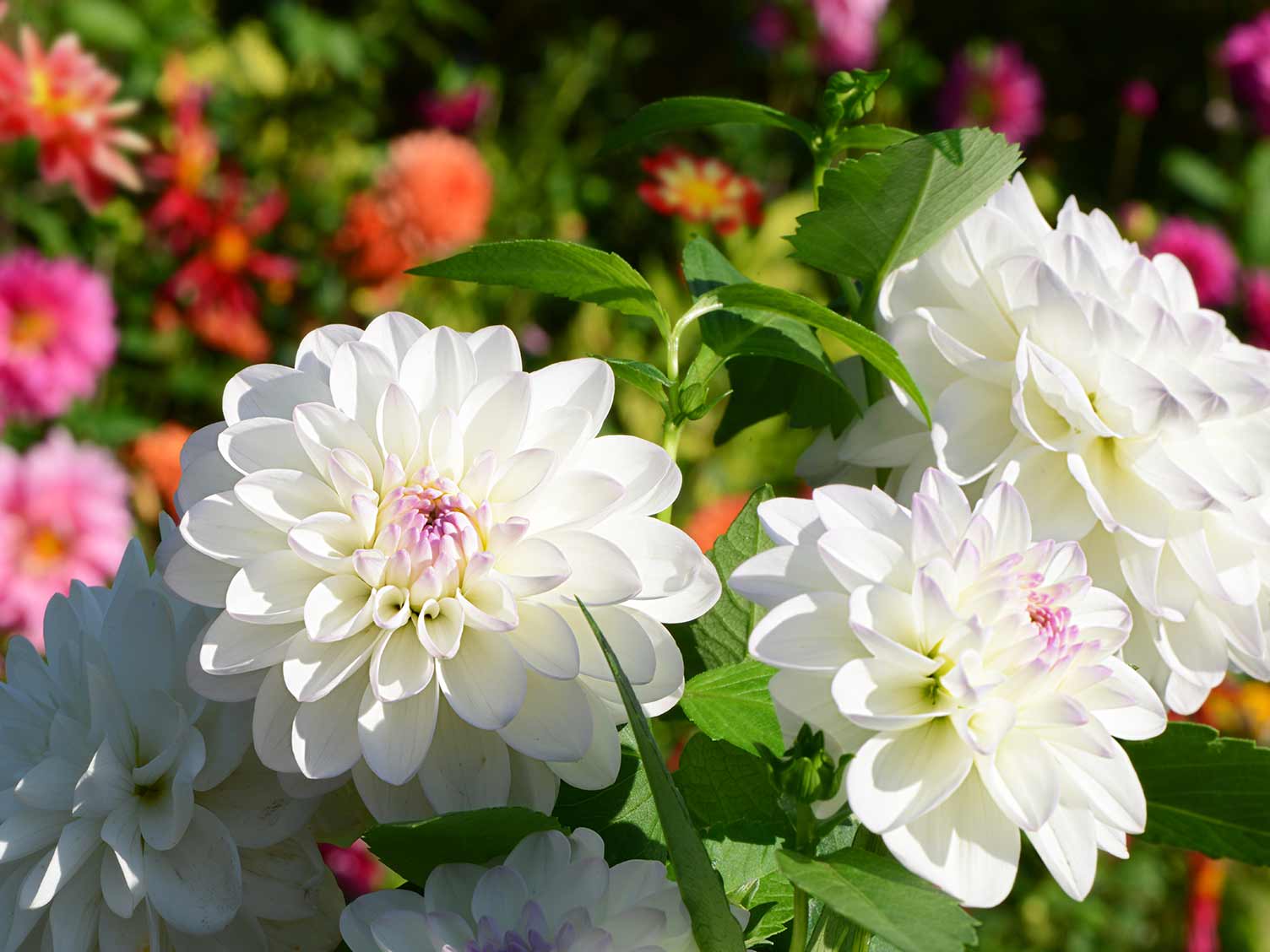With their bright colors and stunning blooms, dahlias make a bold statement in any garden. These summer-blooming tubers come in a dazzling range of sizes colors and forms to fit any sunny bed or border. Follow this guide for successfully growing vibrant dahlias directly in your garden beds for continuous color from midsummer into fall.
Benefits of Planting Dahlias in Garden Beds
Compared to containers, planting dahlias right in garden soil provides:
- More room for tubers to expand and grow larger plants
- Natural drainage and airflow around tubers
- Easy division and transplantation each season
- Ability to naturalize in the landscape over time
- Less frequent watering required
- Lower cost than purchasing planters and soil
Choosing the Right Dahlia Varieties
With over 20,000 registered cultivars, selecting dahlia varieties can be overwhelming. Consider these factors when deciding:
- Plant size – Compact bush or tall cutting garden types
- Bloom form – Simple single, double, anemone, collarette, etc.
- Bloom size – Massive 15-inch giant types or petite 2-inch pompons
- Color – Bold brights, pastels, bicolors, blends and more
- Bloom time – Early, mid or late season bloomers
Match varieties to your climate, space and personal preferences. Aim for a mix of heights, colors and bloom times for continuous interest.
Preparing Garden Beds for Planting
Dahlias thrive in sunny spots with fertile well-drained soil. In spring prepare beds by
- Loosening and breaking up compacted soil with a fork
- Mixing in 2-4 inches of aged compost or manure
- Eliminating weeds which compete for water and nutrients
- Adding a balanced organic fertilizer as needed based on soil test
- Creating raised rows or beds for improved drainage
- Working in sand or pea gravel if drainage is poor
Ideally, soil pH should be slightly acidic, between 6.0-7.0. Dahlias are heavy feeders, so incorporating rich organic matter is key.
When to Plant Dahlias Outdoors
Timing is important when transitioning dahlias from indoors to the garden
-
Wait 2-4 weeks after the average last spring frost date.
-
Ensure overnight temperatures stay above 50°F.
-
Allow soil to warm to 60°F before planting tender tubers.
-
Hold off planting if cool, wet conditions are forecasted.
Planting too early risks tubers rotting in chilly, damp soil. Delaying until soils have warmed helps establish plants quickly.
Planting and Supporting Dahlia Tubers
Follow these tips when planting dahlias in garden beds:
-
Space tubers 12-24 inches apart depending on mature plant size.
-
Dig holes 6 inches deep and place tubers horizontally, eyes up.
-
Cover with 2-4 inches of soil, leaving some stem exposed.
-
Pinch out the center growing tip to encourage bushy growth.
-
Install sturdy stakes next to new shoots for tying up stems later.
-
Water thoroughly after planting and mist soil until sprouts emerge.
Proper staking prevents top-heavy plants from flopping over once blooms appear.
Ongoing Care and Maintenance
Ensure your dahlias thrive with attentive care:
-
Water 1-2 inches weekly if rain is lacking. Target soil, not foliage.
-
Apply 2-4 inches of organic mulch around plants to retain moisture.
-
Feed plants monthly with a balanced liquid fertilizer.
-
Pinch lateral shoots to grow bushy, compact plants.
-
Disbud flowers to create one large central bloom.
-
Stake and tie stems to supports as needed.
-
Deadhead spent blooms to prolong flowering.
-
Watch for common pests like earwigs, slugs and Japanese beetles.
-
In fall, cut back stems and lift tubers after first frost.
Consistent deep watering is vital for the extensive root systems. Address pests quickly to avoid damage.
Harvesting Gorgeous Dahlia Blooms
-
Begin cutting stems when at least half of the petals have opened.
-
Cut stems early in the morning for best hydration and longest vase life.
-
Use sharp, clean pruners to avoid crushing stems.
-
Cut blooms at an angle above a leaf node.
-
Immediately place flowers in cool, clean water.
-
Remove lower leaves that would sit below the water line.
Harvesting frequently extends the blooming period into fall. Proper post-harvest care provides 7-10 days of enjoyment indoors.
With some planning and attentive care, growing dahlias directly in your garden beds results in vibrant color from midsummer until fall frost. Explore the astounding diversity of dahlia forms available to find varieties perfectly suited for your unique landscape.
How To Plant Dahlias in Raised Beds For Your Cut Flower Garden! 27 Varieties! Zone 5B!
FAQ
Can you grow dahlias in a raised garden bed?
Are dahlias good in a vegetable garden?
How to use dahlias in a flower bed?
What vegetables grow well with dahlias?
- The Ultimate Guide to Growing Strawberries in Raised Beds - August 8, 2025
- No-Dig Garden Beds: The Easiest Way to Grow a Beautiful Garden - August 6, 2025
- How to Protect and Preserve Wood for Raised Garden Beds - August 6, 2025

